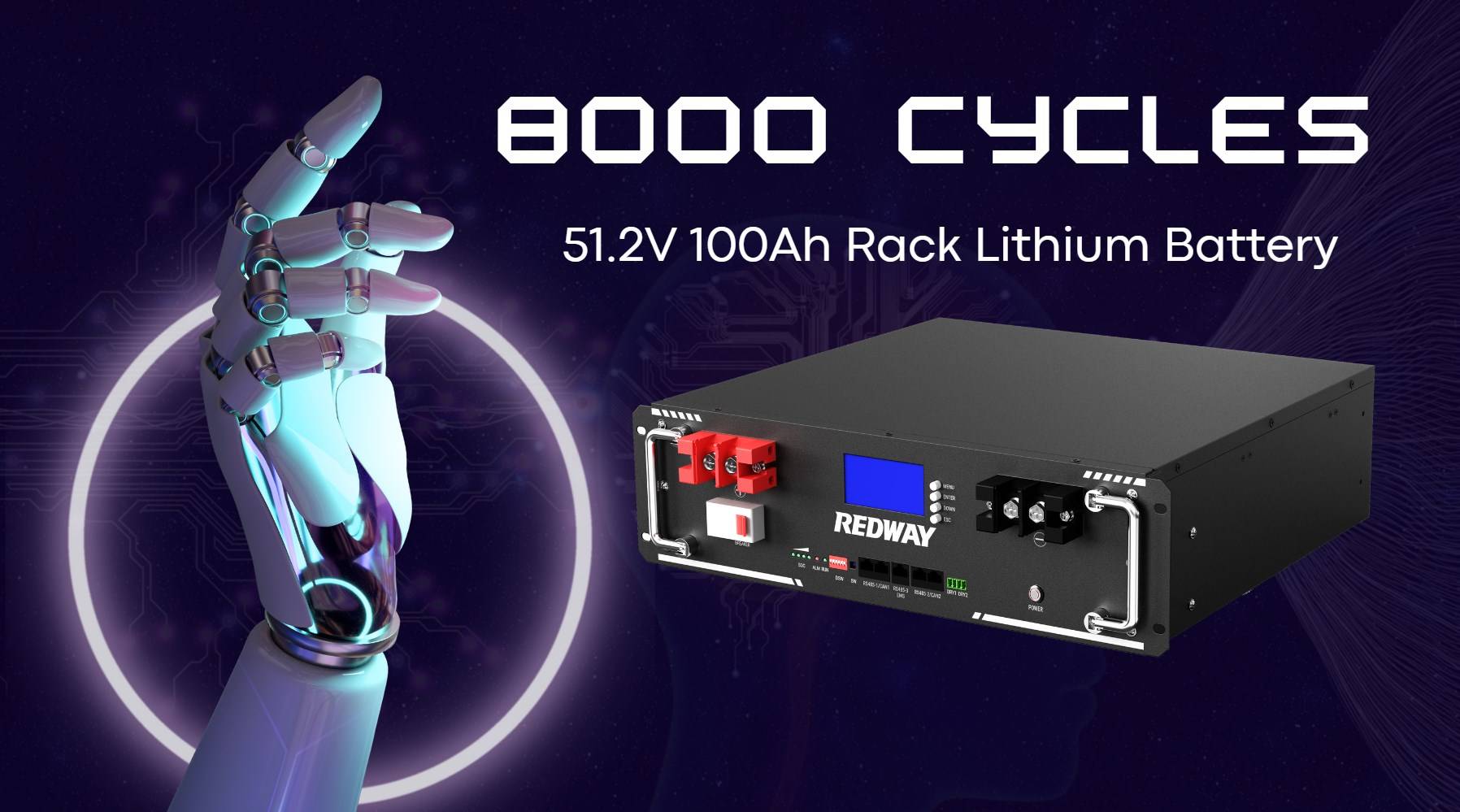- Lithium Golf Cart Battery
- Forklift Lithium Battery
-
48V
- 48V 210Ah
- 48V 300Ah
- 48V 420Ah (949 x 349 x 569 mm)
- 48V 420Ah (950 x 421 x 450 mm)
- 48V 456Ah
- 48V 460Ah (830 x 630 x 590 mm)
- 48V 460Ah (950 x 421 x 450 mm)
- 48V 460Ah (800 x 630 x 600 mm)
- 48V 460Ah (820 x 660 x 470 mm)
- 48V 500Ah
- 48V 560Ah (810 x 630 x 600 mm)
- 48V 560Ah (950 x 592 x 450 mm)
- 48V 600Ah
- 48V 630Ah
-
48V
- 12V Lithium Battery
12V 150Ah Lithium RV Battery
Bluetooth App | BCI Group 31
LiFePO4 Lithium
Discharge Temperature -20°C ~ 65°C
Fast Charger 14.6V 50A
Solar MPPT Charging - 24V Lithium Battery
- 36V Lithium Battery
- 48V Lithium Battery
-
48V LiFePO4 Battery
- 48V 50Ah
- 48V 50Ah (for Golf Carts)
- 48V 60Ah (8D)
- 48V 100Ah (8D)
- 48V 100Ah
- 48V 100Ah (Discharge 100A for Golf Carts)
- 48V 100Ah (Discharge 150A for Golf Carts)
- 48V 100Ah (Discharge 200A for Golf Carts)
- 48V 150Ah (for Golf Carts)
- 48V 160Ah (Discharge 100A for Golf Carts)
- 48V 160Ah (Discharge 160A for Golf Carts)
-
48V LiFePO4 Battery
- 60V Lithium Battery
-
60V LiFePO4 Battery
- 60V 20Ah
- 60V 30Ah
- 60V 50Ah
- 60V 50Ah (Small Size / Side Terminal)
- 60V 100Ah (for Electric Motocycle, Electric Scooter, LSV, AGV)
- 60V 100Ah (for Forklift, AGV, Electric Scooter, Sweeper)
- 60V 150Ah (E-Motocycle / E-Scooter / E-Tricycle / Tour LSV)
- 60V 200Ah (for Forklift, AGV, Electric Scooter, Sweeper)
-
60V LiFePO4 Battery
- 72V~96V Lithium Battery
- Rack-mounted Lithium Battery
- E-Bike Battery
- All-in-One Home-ESS
- Wall-mount Battery ESS
-
Home-ESS Lithium Battery PowerWall
- 24V 100Ah 2.4kWh PW24100-S PowerWall
- 48V 50Ah 2.4kWh PW4850-S PowerWall
- 48V 50Ah 2.56kWh PW5150-S PowerWall
- 48V 100Ah 5.12kWh PW51100-F PowerWall (IP65)
- 48V 100Ah 5.12kWh PW51100-S PowerWall
- 48V 100Ah 5.12kWh PW51100-H PowerWall
- 48V 200Ah 10kWh PW51200-H PowerWall
- 48V 300Ah 15kWh PW51300-H PowerWall
PowerWall 51.2V 100Ah LiFePO4 Lithium Battery
Highly popular in Asia and Eastern Europe.
CE Certification | Home-ESS -
Home-ESS Lithium Battery PowerWall
- Portable Power Stations
What Type of Motorcycle Battery Lasts the Longest?

When choosing a motorcycle battery, longevity is a key factor for many riders. Lithium-ion batteries generally last the longest, with lifespans ranging from 5 to 10 years, depending on usage and maintenance. Understanding the different types of motorcycle batteries and their average lifespans can help you make an informed decision.
What are the different types of motorcycle batteries available?
Motorcycle batteries come in several types, each with unique characteristics and benefits:
- Lead-Acid Batteries: The traditional choice, known for affordability but requiring regular maintenance.
- AGM (Absorbent Glass Mat) Batteries: A type of lead-acid battery that is maintenance-free and offers better performance.
- Lithium-Ion Batteries: The newest technology, known for their lightweight design and long lifespan.
- Gel Batteries: Another type of sealed lead-acid battery that provides excellent durability.
Battery Types Chart
| Battery Type | Characteristics | Lifespan |
|---|---|---|
| Lead-Acid | Affordable, requires maintenance | 2-5 years |
| AGM | Maintenance-free, better performance | 3-5 years |
| Lithium-Ion | Lightweight, long-lasting | 5-10 years |
| Gel | Durable, sealed design | 3-5 years |
How long do various motorcycle battery types typically last?
The lifespan of motorcycle batteries varies significantly based on their type:
- Lead-Acid Batteries: Typically last between 2 to 3 years, often requiring regular water top-ups.
- AGM Batteries: Offer improved longevity, generally lasting around 3 to 5 years due to their sealed design and lower self-discharge rates.
- Lithium-Ion Batteries: Known for their exceptional lifespan, these can last anywhere from 5 to 10 years with proper care.
- Gel Batteries: Similar to AGM in terms of lifespan, gel batteries also last about 3 to 5 years but offer better resistance to extreme temperatures.
Why do lithium-ion batteries outperform traditional options?
Lithium-ion batteries are often considered superior due to several factors:
- Longer Lifespan: They can last up to 10 years or more compared to traditional lead-acid options.
- Weight Advantage: They are significantly lighter, which can improve overall motorcycle performance.
- Faster Charging: Lithium-ion batteries charge more quickly than their lead-acid counterparts.
- Lower Self-Discharge Rate: They retain their charge longer when not in use, reducing the frequency of charging cycles needed.
Lithium-Ion Advantages Chart
| Feature | Lithium-Ion | Lead-Acid |
|---|---|---|
| Lifespan | Up to 10 years | 2-5 years |
| Weight | Light | Heavier |
| Charging Speed | Faster | Slower |
| Self-Discharge Rate | Low | Higher |
What are the advantages of AGM batteries for motorcycles?
AGM batteries offer several advantages that make them a popular choice among riders:
- Maintenance-Free: Unlike traditional lead-acid batteries, AGM batteries do not require water top-ups.
- Vibration Resistance: Their design helps them withstand vibrations better, making them ideal for motorcycles.
- Faster Charging: AGM batteries typically charge faster than conventional lead-acid models.
- Sealed Design: This prevents leaks and spills, making them safer for use in motorcycles.
How can maintenance impact the lifespan of motorcycle batteries?
Proper maintenance is crucial for extending the lifespan of any motorcycle battery. Here are some key practices:
- Regular Inspections: Check terminals for corrosion and ensure connections are tight.
- Cleanliness: Keep the battery clean and free from dirt and grime to prevent short circuits.
- Charging Habits: Avoid letting your battery discharge completely; regular top-ups can help maintain optimal performance.
- Storage Conditions: Store your motorcycle in a cool, dry place to prevent damage from extreme temperatures.
Which motorcycle battery is the best for longevity?
For those prioritizing longevity, lithium-ion batteries are generally the best option available on the market today. Brands like Shorai and AntiGravity offer high-performance lithium models known for their durability and efficiency. While they come at a higher initial cost, their extended lifespan and reduced maintenance needs often make them a cost-effective choice over time.
Conclusion
Choosing the right motorcycle battery involves understanding the different types available and their respective lifespans. Lithium-ion batteries stand out as the longest-lasting option, while AGM batteries offer excellent performance with minimal maintenance. By considering your riding habits and maintenance practices, you can select a battery that ensures reliable performance for years to come.















